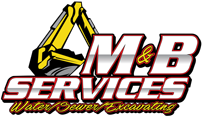
Spring and summer floods are usually caused by natural disasters, heavy rainfall, or an increased use of air conditioner units. Flooding can happen even in the coldest months due to melting snow, faulty heaters, or clogged sewer lines. This type of water damage, also known as black water overflow, is the most dangerous and most contaminated. This type of water damage can cause irreparable damage to most things. Sewer water also contains large quantities of pathogens that can lead to serious health problems.
Causes of sewer backup
A sewer backup can cause a lot of damage. A sewage backup can cause water damage to your house and possessions as well as health problems for you, your family and pets. Sewage contaminants are full of bacteria, viruses and other toxic substances. Instead of dealing with the consequences of a sewer backup, you can prevent it from ever happening. To do this, it is important to understand the causes of sewer backups and how to prevent them from happening. These are the most common causes for sewer backups:
Blockages of tree roots
Problems with the plumbing and sewage lines
Inadequate sewage line planning and installations
Broken pipes
Obstructive items not meant to be flushed down the toilets can cause obstruction
Leakage in the waste line
Frozen septic system
Blocked sewer vents.
Signs of a clogged sewer line
Although you may understand what causes a sewer backup, you may not be able to predict the likelihood of one as most of the indicators-blockages, defects, leaks-are hidden underground or within the structure of your home. There are a few signs that indicate a sewer backup is imminent.
Foul odors can be found in your home, particularly from the drains.
When you flush the toilet or when water drains, there is a gurgling sound.
Slow draining bathtubs, sinks and laundry lines.
Winter Tips to Avoid a Sewer Line Backup
Although you might be able to understand the causes of a sewer backup it can seem difficult to predict when one will occur since many indicators such as defects, blockages and leaks are underground or within your home. Even though the problem may not be immediately apparent, sewer lines will send warning signs when there is a backup. These are the most obvious signs that a sewer line is clogged:
Foul odors can be found in your home, particularly from the drains
When you flush the toilets or when water drains, there is a gurgling sound
Slow draining bathtubs, sinks and laundry lines.
Checklist to Avoid Sewer Line Backups in Winter
These precautions can be taken all year to avoid a sewer line backup in the colder months.
Properly dispose of grease
Do not put difficult-to-grind objects in the garbage disposal
Do not flush items down the toilet such as sanitary napkins or baby wipes.
If you don’t already have one, test it regularly.
Clear the snow from your sewer vents. Snow accumulations that have become clogged can block your sewer vents, which can lead to the release of harmful gases into your home.
Water can be added to drains. You can also prevent sewer gas from entering your home by adding water to the traps of less-used drains or basement floor drains.
Keep your sewer vent free from freezing. To keep your sewer vent from freezing, you can either install additional insulation or hire a professional to put in a heating element to the attic.
To winterproof your plumbing, and to assess the condition of your home’s sewer lines, you should consult a plumber or sewer professional
Sewage water can cause serious health problems if it seeps into your property. Not only does it smell bad, but it can also cause illness to anyone who encounters it. Leakage and flooding from freshwater sources may cause severe damage but sewage water is a much greater danger.
Do you need sewage cleaning services?
If you have a sewage backup, you can call M & B Services to handle the situation. M & B Services offers complete water and sewage damage repair services. We can handle blockages due to foreign objects, tree roots, flooding, structural defects, and sewage line problems. We provide emergency water damage restoration to stop further damage.
